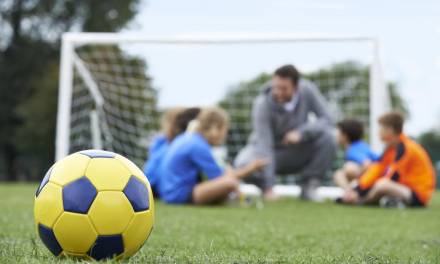It’s not just lack of ability or desire stopping kids getting access to activity, there are a number of other barriers, too.
This series has looked at how to get kids moving, a goal we can all agree is worthwhile. But is physical activity accessible to all students? We look at some potential barriers preventing children from getting active.
Lack of facilities
It’s a simple fact that you can’t get kids to do more sport if there’s nowhere for them to do it. Last year (2016) saw more school playing fields sold off than any other year since 2013 – 21 were sold, compared to 11 in 2015.
In January 2017, Scottish Labour published figures revealing that more than 1,000 schools in Scotland don’t have outdoor sports facilities.
Similarly, the Amateur Swimming Association (ASA) found that a third of children leave primary school unable to swim; of these some 40% aren’t even offered the opportunity to learn. One reason given for this is the dramatic decline in the number school pools over the last 20 years.
Investment in municipal leisure facilities is falling, and likely to decline further. In 2010 a government free swimming initiative for children under 16 was axed, while council leisure centres, golf courses and swimming pools across the country have been forced to close, leading to criticism that Britain’s Olympic legacy is being wasted. Even where facilities do exist, they’re often underfunded and very basic.
It will come as no surprise that these problems are exacerbated in deprived inner-city areas. Tower Hamlets in east London, for example, has been described as “a real backwater” for school sports; the borough’s schools don’t share a playing field among them.
Cost
Even in areas where there are facilities that are accessible to all, price can be prohibitive, especially in more deprived parts of the country. Your town might boast the most state-of-the-art leisure centre in the country, but that’s no good to parents who can’t afford the entry fee or lack the transport to get there.
Then there’s the right kit and equipment. The London Boroughs of Hackney and Waltham Forest have ‘turn up and play’ free tennis courts, but parents have to provide suitable clothing, tennis balls and a decent racket. Even basic football kit can add up when families have more than one child at school.
Safety issues
As a nation we seem to be getting more and more afraid of letting our children play outside. Today’s grandparents roamed on average six miles; today’s kids go no more than 300m from home. One major reason for this is traffic – parents don’t want their children cycling or walking along heavily congested streets.
Cycling is generally a very safe mode of transport, but accidents do happen. Pollution is a very real concern, too.
Then there’s the lack of supervision. ‘Stranger danger’ has been vastly over-exaggerated, but this doesn’t mean parents’ fears are unfounded.
Additionally, groups of youngsters can easily squabble or fight with no adults around to diffuse any arguments; it’s also good to have a grown-up on hand should there be any injuries. Younger children especially should be accompanied by adults.
Sadly, sport isn’t accessible to all students equally, but these barriers aren’t insurmountable. Our next article in the Get Moving series will offer practical advice on what you can do to help.
Rebecca has been a writer and editor for almost 20 years. She writes on a huge range of subjects, concentrating on sport, nature, mental health, and crafts.









